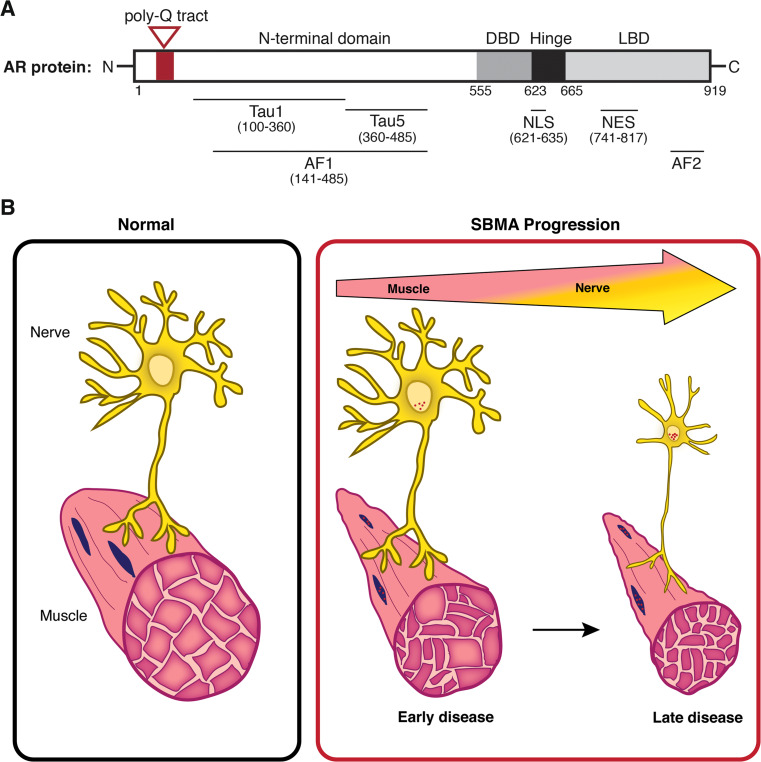Fig. 1.
Expansion of the androgen receptor’s polyglutamine tract triggers neuromuscular degeneration in SBMA. a Linear diagram of the AR, indicating the presence of the glutamine tract in the N-terminal domain (highlighted in red). This track is expanded in SBMA patients to ≥38 glutamines. Also shown are the central DBD and hinge regions, C-terminal LBD, and several additional functional domains that are detailed in the text. Numbers indicate amino acid residues. b Model of time-dependent pathology in SBMA resulting in skeletal muscle and motor neuron degeneration. Skeletal muscle alterations occur early in disease progression and are reflected by myopathic symptoms, including elevated serum creatine kinase levels and muscle cramps. Symptoms arising from motor neuron degeneration predominate at later stages and progress to motor neuron loss at end stage. Nuclear accumulation and intranuclear inclusions of the polyQ AR (in red) occur throughout the disease in both nerve and muscle cells. Data from model systems suggest that expression of the polyQ AR in skeletal muscle plays an important role in disease symptoms and progression

